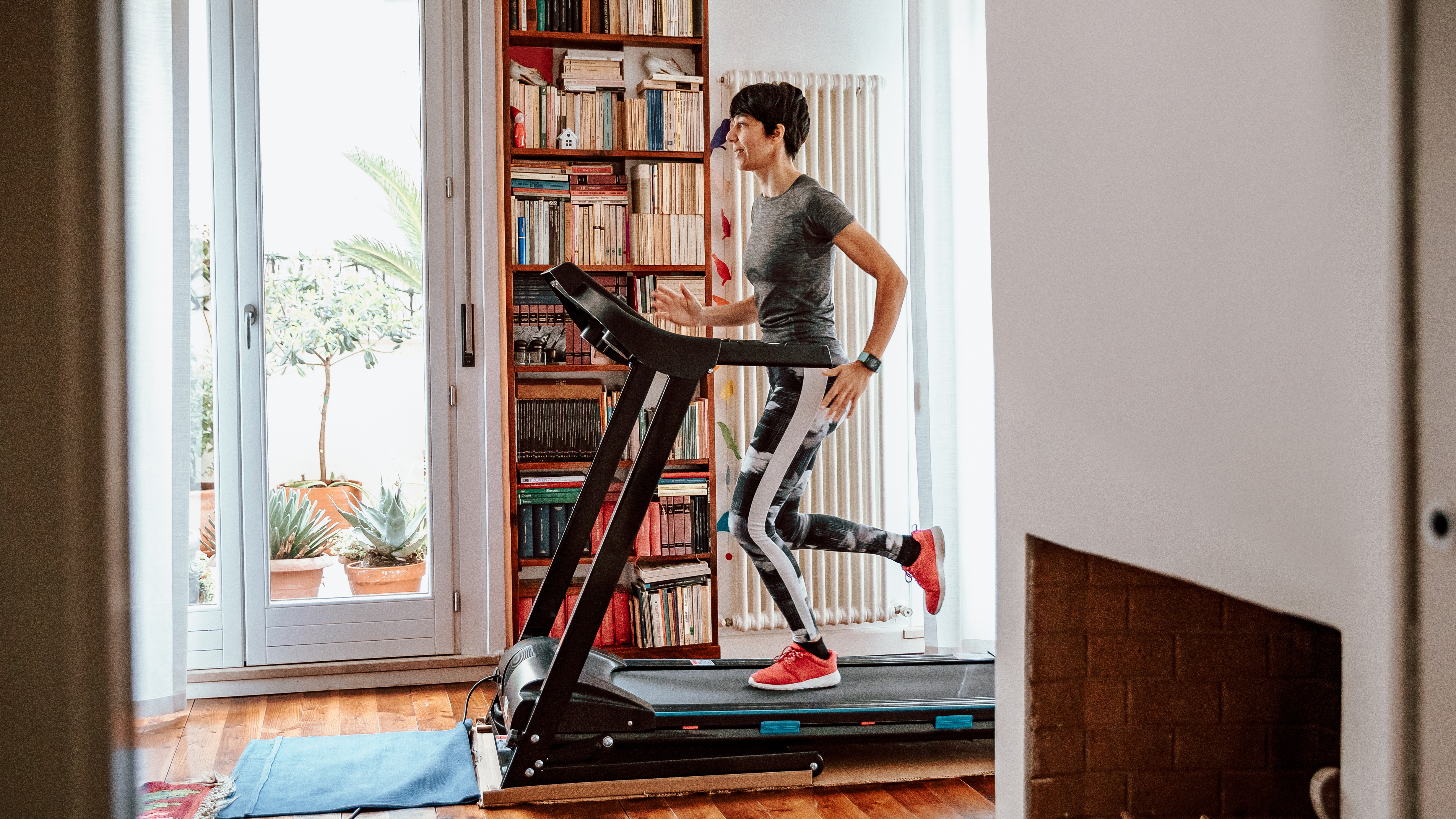“Running should be fun”—an expert explains how to start a new run routine that you actually enjoy
Tips on warming-up properly and how to listen to your body when running


When I started running again after an eight-year break, I had high hopes that it would get me back into a solid running routine.
Sadly, that didn’t happen, mainly because I’m a single mom with very little child-free time. So, unless I drag my two young daughters with me, running outside is not often an option.
However, I might have found a solution: an at-home treadmill.
I’m optimistic that using this will help me run more regularly, but I still feel like I need guidance on how to make my running habit stick.
I spoke with Samuel Westcott from Runners Need, a former qualified run leader for England Athletics, to get his advice.
What is the best way to start running if you are a beginner?
“Firstly, remove all preconceived expectations of what running is for you,” says Westcott.
“There is no minimum. There is no maximum. People win gold medals for running 100m—that’s nine seconds of running.”
Start your week with achievable workout ideas, health tips and wellbeing advice in your inbox.
He explains that one of the biggest mistakes new runners make is setting unattainable goals.

“Start small, stay small. Experiment. See what you can do,” he says.
That might mean running for five minutes at a time, going really slowly, or playing around with the run-walk-run method to find something that suits you.
“Running should be fun. It’s hard, but it is innate. Limit your expectations and just enjoy running for what it gives you. Running is unique and your relationship with it should be, too.”
What kind of warm-up should I do?
“Walking before running on a treadmill is great preparation, but before anything: stretch,” says Westcott. “Dynamic stretches and static stretches are a great low-intensity warm-up, which prepares the muscles for sport.”
You could try doing simple leg swings, squats and calf raises, alongside some moderately-paced walking before your run.
Whatever you do, Westcott cautions against skipping your warm-up, as it can lead to a sluggish start.
How should you cool down?
Westcott suggests focusing on static stretches when you cool down.
“Think of cooling down like meditation. Start from the top in your head, calm yourself down, roll your neck, then your shoulders, then your arms, hips, glutes, thighs, calves and feet,” he says.
The aim is to lower your heart rate slowly back to a normal resting state and to stretch muscles across your whole body, so that you stay limber throughout the day.
“Away from stretches, replenishing the fluids and calories lost during exercise is also highly important,” says Westcott.
How does running outdoors compare with treadmill running?
You don’t have to deal with extreme weather and hilly inclines when running indoors, but Westcott says treadmill running presents its own challenges.
“Running on a treadmill is hard and usually a lot hotter than outside,” he says.

His advice is to adjust your running sessions to suit these changes. Go slower, take pauses and listen to your body.
“Treadmill speed does not always correlate to outside running, so just go off what seems right to you. Set the pace at something which seems comfortable.”
What kind of kit does a beginner need to run?
There are two essential items that every runner should own, according to Westcott.
“You need a pair of shoes and a pair of good socks. For me, this is the bare minimum,” he says.
He also suggests avoiding cotton clothing, especially T-shirts, for runs.
“A thin sweat-wicking T-shirt and running shorts will make your experience a lot more enjoyable.”
How can I avoid injury during my run?
Westcott says eating the right kinds of food can help your runs.
“On a hot day, drinking water and maybe some electrolytes will reduce the risk of cramping. Gels, bars and sometimes carb mixes can improve running efficiency and stave off any mid-run energy crashes.”
He also says it’s important to keep tabs on your perceived effort during a run, to make sure you’re not pushing yourself too much.
“The body has an incredible way of letting you know if things are getting too hard. Listen to that voice! If it gets too hard, don't be a hero—stop.”
Maddy Biddulph is a journalist specializing in fitness, health and wellbeing content, with 26 years in consumer media working as a writer and editor for some of the bestselling newspapers, magazines and websites in the US and UK, including Marie Claire, The Sunday Times and Women’s Health UK.
She is a CIMPSA-certified PT and works one-on-one with clients, as well as running Circuits Club classes which mixes cardio and strength training and chair-based exercise classes for seniors.
You must confirm your public display name before commenting
Please logout and then login again, you will then be prompted to enter your display name.
